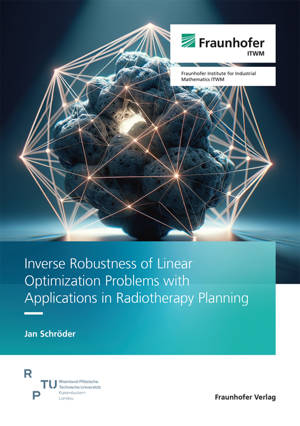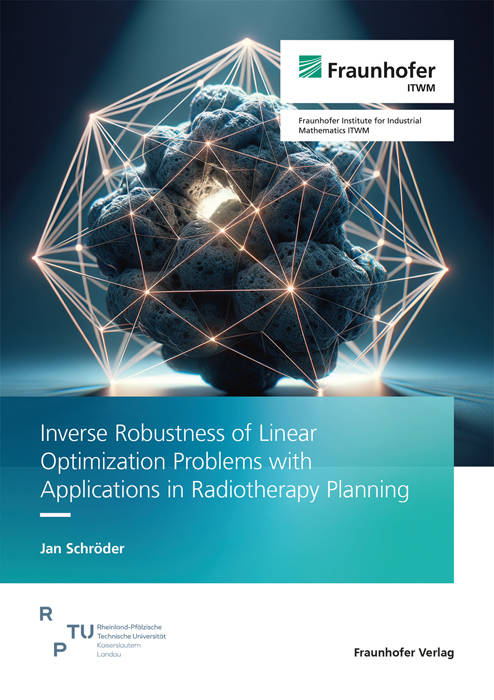
- Afhalen na 1 uur in een winkel met voorraad
- Gratis thuislevering in België vanaf € 30
- Ruim aanbod met 7 miljoen producten
- Afhalen na 1 uur in een winkel met voorraad
- Gratis thuislevering in België vanaf € 30
- Ruim aanbod met 7 miljoen producten
Zoeken
Inverse Robustness of Linear Optimization Problems with Applications in Radiotherapy Planning
Jan Schröder
Paperback | Engels
€ 33,95
+ 67 punten
Omschrijving
Both multicriteria optimization and robust optimization play a big role in industrial applications. Their natural unification into a multicriteria worst-case model generally leads to overly conservative solutions though. Hence, other concepts have been developed recently. One of these methods is inverse robustness. Here, the size of the uncertainty set itself is viewed as an objective. The mathematical formulation of this problem turns out to be computationally difficult to handle in the general case.
By considering only linear multicriteria problems, the structure is considerably simplified from the start. After the introduction of interval uncertainty, a classical worst-case model is obtained which can be significantly simplified via interval matrices. This model is turned into an inverse robustness problem by linearly scaling the uncertainty set around a nominal scenario. The result is a quadratically constrained quadratic problem (QCQP) which gets relaxed into a semi-definite problem. A reconstruction method is given with which optimal solutions of the QCQP can be restored. This allows to efficiently compute solutions of large-scale practical problems like the radiotherapy planning problem.
By considering only linear multicriteria problems, the structure is considerably simplified from the start. After the introduction of interval uncertainty, a classical worst-case model is obtained which can be significantly simplified via interval matrices. This model is turned into an inverse robustness problem by linearly scaling the uncertainty set around a nominal scenario. The result is a quadratically constrained quadratic problem (QCQP) which gets relaxed into a semi-definite problem. A reconstruction method is given with which optimal solutions of the QCQP can be restored. This allows to efficiently compute solutions of large-scale practical problems like the radiotherapy planning problem.
Specificaties
Betrokkenen
- Auteur(s):
- Uitgeverij:
Inhoud
- Aantal bladzijden:
- 112
- Taal:
- Engels
Eigenschappen
- Productcode (EAN):
- 9783839621363
- Uitvoering:
- Paperback
- Afmetingen:
- 148 mm x 210 mm

Alleen bij Standaard Boekhandel
+ 67 punten op je klantenkaart van Standaard Boekhandel
Beoordelingen
We publiceren alleen reviews die voldoen aan de voorwaarden voor reviews. Bekijk onze voorwaarden voor reviews.








